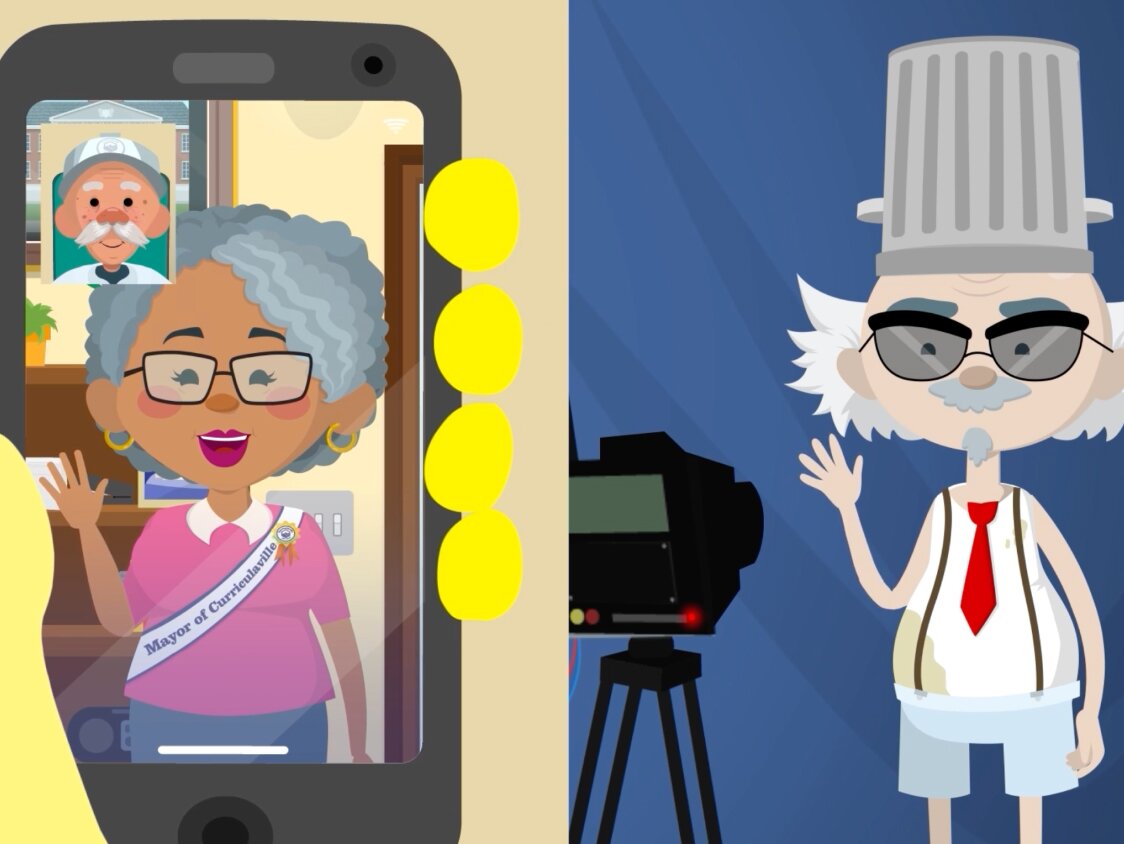A deepfake is a video or audio clip generated using artificial intelligence (AI) that mimics a person’s likeness or voice to depict events or statements that never actually happened. These AI-forged creations can seem incredibly realistic and are often used in scams, misinformation campaigns, and other forms of digital manipulation, sparking significant cybersecurity concerns.
The word "deepfake" is a mash-up of “deep learning” (a type of AI) and “fake,” describing how this technology uses advanced machine learning to create realistic imitations.
How deepfakes work
At the core of deepfake technology is the Generative Adversarial Network (GAN), where two AI systems work together. One creates the fake content, while the other critiques it, improving its believability over time in a repetitive cycle. By processing massive datasets of images, videos, and audio clips of a person, the system learns to simulate their likeness and mannerisms convincingly.
Modern tools allow even those with no technical expertise to create deepfakes, thanks to user-friendly apps and software making this technology more accessible. While powerful in the right hands, its misuse elevates cybersecurity challenges globally.
Cybersecurity concerns of deepfakes
Deepfakes represent serious cybersecurity risks, including:
Fraud Attacks: Deepfake audio or video can impersonate company executives, authorizing fake wire transfers or giving false instructions, a tactic known as “CEO fraud.” Scammers have successfully stolen millions with this technique.
Misinformation and Propaganda: Deepfake videos can spread false information online, undermining trust in news and fueling confusion during critical events like elections or crises.
Privacy Violations: Malicious actors can use deepfakes to damage personal reputations, often by creating fake explicit content or using them for blackmail.
Erosion of Trust: By making it harder to distinguish real content from fake, deepfakes undermine public trust in genuine media, heightening uncertainty and skepticism about truth online.
These threats aren’t hypothetical; they’ve already been seen in real-world incidents targeting both individuals and organizations. Staying vigilant and adopting countermeasures is essential to mitigate their impact.
"We can no longer trust voice authentication over the phone,” said Ben Bernstein, technical account manager at Huntress. “I could effortlessly feed an interview or podcast into a deepfake AI solution, effectively training it to mimic a target's voice. Imagine that AI then calling a helpdesk to reset a password or impersonating an executive to extract sensitive financial data. MSPs especially need to recognize this escalating threat and implement stronger verification methods.”
How to spot a deepfake
Detecting a deepfake can be tricky, but some telltale signs include:
Unnatural Movements: Look for overly rigid or unnatural facial expressions, body language, or eye blinks.
Visual Artifacts: Blurry edges, mismatched lighting, or flickering in the video may hint at manipulation.
Audio Irregularities: Pay attention to speech patterns, tone mismatches, or any noticeable syncing issues between lip movement and sound.
Cross-Check the Context: If the message or video seems unusually controversial or odd, verify it against other credible sources.
Emerging tools and AI-based detection systems are being developed to help identify deepfakes more reliably.
Deepfake
In this episode, the mayor of Sludge Springs, cooks up a deepfake to trick Curriculaville’s sanitation worker, Jacob, in hopes of sabotaging their clean town record.
This episode dives into how deepfakes are created, the risks they pose in daily life, and steps you can take to spot and protect against them. Will Jacob see through the scheme, or will AI win the day?
How to mitigate deepfake risks
Train Your Team: Provide security awareness training to employees on deepfakes and how they might be used in phishing attempts or executive impersonation schemes.
Verify Requests: Always confirm instructions or financial transactions through a secondary communication channel before acting.
Leverage Detection Tools: Use AI-based tools designed to analyze video and audio metadata for potential tampering.
Strengthen Security: Secure your organization’s infrastructure with comprehensive cybersecurity measures, including multi-factor authentication (MFA) and endpoint protection to defend against associated threats like phishing or malware.
Be Skeptical: Foster critical thinking habits when consuming media, teaching employees and the general public to question and verify suspicious content.
Common examples
Deepfakes can surface in numerous scenarios - both good and bad. Here are some notable examples:
Entertainment: Recreating deceased actors in films or editing scenes for creative storytelling.
Satire and Humor: Swapping faces of public figures in viral meme videos.
Cybercrime: Using deepfake voice calls to impersonate executives and authorize fraudulent transfers.
Political Misinformation: Spreading fake speeches or doctored videos to discredit politicians or manipulate opinions. Read more in our blog post, Protect Yourself from Political Donation Scams.
In another unique example, a deepfake of a murder victim was was used in court. Check out our Tradecraft Tuesday clip with Truman Kain and Chris Henderson discussing this unique AI deepfake use case where a judge allowed an impact statement by the deceased individual.
Are deepfakes dangerous?
Deepfakes blur the line between reality and fiction, creating unprecedented risks. From financial fraud to undermining democracy, their misuse could harm individuals, organizations, and society as a whole. Malicious use erodes trust in legitimate content while increasing the effort and resources required to verify authenticity.
On the flip side, deepfakes can be a force for good when used responsibly, enabling creative projects, preserving cultural heritage, and advancing education. The key lies in using this technology ethically while addressing its potential harms head-on.
FAQs about deepfakes
Deepfakes are AI-generated videos or audio clips that mimic a person’s likeness or voice to create fake yet convincing content. They’re a concern because they can be used for fraud, misinformation, and privacy violations, among other cybersecurity threats.
Cybercriminals use deepfakes for a variety of attacks, such as impersonating executives (CEO fraud) to approve fake wire transfers, spreading false information during critical events, or creating fake content for blackmail.
Look for signs like unnatural facial expressions or movements, audio and visual inconsistencies, mismatched lighting, or syncing issues between lip movement and sound. When content seems questionable, cross-check its credibility with reliable sources.
Yes, emerging AI detection tools analyze video and audio metadata to identify manipulation. Staying updated with these technologies can help you spot deepfake content more reliably.
Organizations should train employees on deepfake awareness, verify unusual requests through secondary channels, use authentication measures like MFA, and adopt endpoint protection tools to defend against threats associated with deepfakes.
Yes, deepfakes can enhance entertainment, provide cultural preservation, and streamline artistic or educational projects. The key is to use this technology ethically and responsibly to avoid harm.
High-value targets like corporations, political figures, and individuals with significant public profiles are at greater risk. However, deepfake scams can target anyone, so staying vigilant is critical for everyone.


Why Huntress?
Deepfakes are the perfect example of how emerging tech can be twisted into a cybersecurity nightmare. Their role in phishing, misinformation, and privacy violations makes them a growing cybersecurity concern. But here’s the good news: Huntress is built to combat these evolving threats. With expert threat handling and advanced detection tools, Huntress empowers your organization to stay one step ahead of malicious actors. From identifying fraud attempts to educating against phishing schemes, Huntress helps cut through the noise of deepfake trickery and secures what matters most. Stay smart, stay protected, and put cybercriminals on notice with Huntress in your corner.


Provide an Impactful SAT Experience
Don’t just check a compliance box. Elevate your workplace’s security culture while giving your employees an enjoyable experience.









